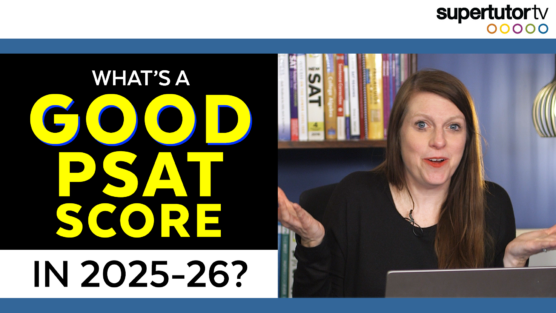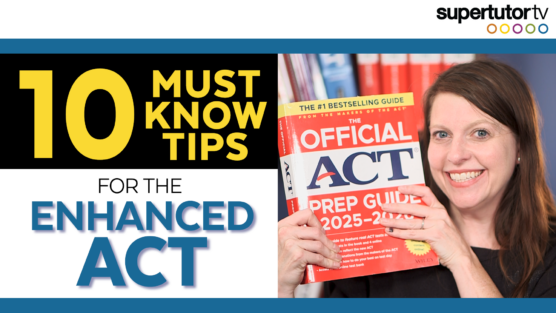Are you applying to college and wondering how you can make an incredible video supplement or portfolio to go along with your application? If you’re applying to a school like Brown, Bowdoin, Claremont McKenna, Wake Forest, Swarthmore, UChicago, or Wash U, all these schools have the option for you to submit an optional video supplement. There are also colleges like Duke University that do video interviews where they ask questions for some programs, and you have to answer the questions on video as they ask them, but that’s not necessarily what I’m going to cover today. I’m going to talk about when you are allowed to submit a personal video that shows your personality or who you are. And these can vary quite a bit in terms of the instructions. There are certainly some schools that will give you a suggested list of questions that you can answer. There are other schools that just say let your creativity run free, be spontaneous, be you, and just let you do what you want. In any case, I have six tips for you guys on how to approach these videos or some ideas for how you can put this together.
Think Visually
My first tip is to think visually. One of the cool things about video is that we get to see things that can bring you and your story to life. What does that mean? That means think about the things that could help us understand you and what you’re doing better if we just could see them. If you’re doing a really cool science project, show me the project if it’s visual. If you are a violinist and you’re really good at the violin, play the violin for 20 seconds and let me hear you play so I can see you in your element. It makes me feel like I’m getting to know you. If you wrote your Common App about your giant Italian family, introduce me to your five siblings and two dogs. Show me the world that you come from.
On that note, I once had a girl who lived in Europe, and she showed us the view out her window, and I thought it was amazing. It was on the coast of Italy, and it was really cool, because she lives in a totally different universe than we do here in the United States. Whatever is unique and cool and interesting about you and where you live that can be seen and lets us into the space where you are, show us. Turn on the camera phone and make it happen. Share those visual things about you. And it’s not necessarily redundant in your video presentation if you talk about things that were in other places of your application because we get to see it. Since seeing it helps bring it alive, you’re good.
Have Fun
Number two is to have fun. Generally, these video essays that are now available at many colleges are going to potentially replace personal interviews. And the point of an interview was always to try to get to know you, the human. It was to get beyond the grades and the scores and all of that stuff and see what it is like to sit across the table from you. What’s it like to hang out with you? What do you look like? How do you express yourself? Who is the person you are? And that’s something we really want from a video. So, have fun. Share who you are. I think it’s also important that if this is a video about you, you should probably be on camera for part of it. It doesn’t mean that your face has to be all over it the whole time. And I certainly love using clips from lots of other places and sources because it keeps it fun and interesting to watch. But some of this video should probably be you talking to the camera and sharing who you are. Don’t be afraid to have a sense of humor. Don’t be afraid to be a little bit quirky. You’re 17; that’s cool. Be who you are. Be yourself. And we really want to see just that fun side of you. It doesn’t have to be super serious. You don’t have to be all academic. This isn’t the place in the application for that.
Your Personality May Be Enough
Number three: your personality may be enough. The other thing that a lot of schools say in their description is that you do not have to have fancy editing. It doesn’t mean you can’t. You can do it if you want to. But you don’t have to have fancy editing or lots of quick cuts. Again, this is a replacement for an interview where they want to get to know you. So, one option that some of my students have opted for rather than doing a lot of edited stuff—and this works particularly well if you’ve procrastinated—is to treat this like a video essay. This means write an essay of some sort where you talk about ideas that are important to you or some fun facts about you and deliver them on camera off the cuff. You want to say something interesting. It will be boring if you just turn on the camera and you say, “Hi, my name is Joe, and I live in Akron, Ohio. I hope you like my application.” We don’t want it to be dry and boring. We want you to get something across.
So, if you’re not going to cut a bunch of stuff together, put the same effort into this that you would put into an essay that you write on the page, but just deliver it as you and talk and give us your personality as you do so. And that can also be an effective way to do a video essay. And I’ve seen students do that and put it together pretty quickly. And most of the time, my students will still interject a couple of pictures, but it might just be them talking. They might show a few pictures, and then it’s them talking again. And if you have something interesting to say and you have a lovely essay, deliver it. And that could be enough.
Do Not Be Daunted By Editing Software
Number four is don’t be daunted by editing software. There’s plenty of free editing software out there in the world that’s not that hard to use even if you never went to film school. And yes, I went to film school. But CapCut is owned by ByteDance, which also owns TikTok. It’s pretty easy to download and use. And there’s a version you can use on your phone and a version you can use on your desktop. It’s totally free and pretty simple. Sometimes it’s too simple.
iMovie is another software that a lot of my students who happen to have Macs use. If you really want to go to the Macs, DaVinci Resolve is professional-grade. You can do everything you could ever imagine, but there’s probably a bigger learning curve there. You really don’t have to do that unless you’re a real overachiever. There’s lots of other editing software out there too, and I’m sure you can get on Google and figure it out. But no matter what you use, it doesn’t have to be perfect. And it will take longer than you think it will. So, do not try to do all this the night before if you are going to edit. Though, with CapCut, you can do it on your phone. In any case, phones make great cameras. It’s amazing, the technology that we have. Don’t be intimidated by it. Pick something up and figure it out. Just make sure you start a few weeks in advance so you’ve got time to put it together because it will take some time.
Follow Directions
Number five is to follow directions. Ensure your video is the length that’s required. Ensure that it’s the format that’s necessary. Horizontal is usually the preference, and just make sure you check all the instructions because they change from school to school. You also want to know what format you need to upload it in and what kind of resolution, what size, and all of that good stuff.
Plan a Voiceover
Finally: plan a voiceover. Most of the time, I think a voiceover can be really effective to try to make sure that the 60 seconds, 90 seconds, or 120 seconds that you have is cohesive and works. You don’t have to script out every word, but I would at least try to have a plan for what topics you’re going to talk about. If you feel like scripting makes you read from the page and it’s really awkward, then you can kind of riff. But have a plan. Figure out where you’re headed. Figure out what talking points you want to do. And like I said, a voiceover can kind of string together photos you include, short videos you have, and whatever other little pieces of nostalgia of your life that you want to include.
If you’re looking for support in the college essays or admissions process, reach out to us at SuperTutorTV.com. We’ve got lots of resources for you guys!




